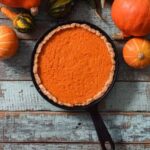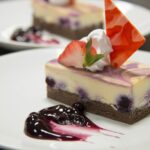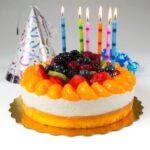Can whipped cream be used for cake decorating? In this article, we will delve into the versatility of whipped cream as a frosting option for stunning cake decorations. Whipped cream offers a light and fluffy texture that is different from traditional buttercream frostings, and understanding its basics is essential before using it in cake decorating.
Selecting the right type of whipped cream, comparing it to buttercream, and exploring techniques and tools will all be covered in this comprehensive guide. From troubleshooting common issues to discovering alternative frosting options, we will leave no stone unturned in exploring the endless possibilities that whipped cream brings to the world of cake decoration. Get ready to take your cake decorating skills to new heights with this versatile ingredient.
Understanding the Basics
Whipped cream is a versatile and popular frosting choice for cake decorating. Understanding the basics of whipped cream and how it compares to other frostings is crucial in achieving the desired results for your cakes.
Whipped cream is made by beating heavy cream with sugar until it reaches a light and fluffy consistency. It is often used as a filling or topping for desserts such as pies, ice cream sundaes, and hot beverages like hot chocolate or coffee. Whipped cream has a delicate texture and a rich, creamy flavor that complements many different types of cakes.
Compared to other frostings, whipped cream has some distinct characteristics. One major difference is the use of fat and sugar content. Whipped cream contains a higher proportion of fat than some other frostings, which contributes to its creamy texture. It also has less sugar compared to buttercream or fondant, resulting in a lighter sweetness that allows the flavors of the cake and any additional fillings to shine through.
In terms of stability, whipped cream is not as firm as buttercream or fondant frostings. It is more prone to melting or deflating if exposed to heat or left at room temperature for too long. However, with proper techniques and tools, whipped cream can be stabilized so that it maintains its shape and structure for longer periods.
To enhance the stability of whipped cream for cake decorating purposes, stabilizers such as gelatin or powdered sugar can be added during the whipping process. These ingredients help prevent deflation and provide extra support when piping intricate designs or decorations onto your cakes.
Overall, understanding the basics of whipped cream and how it compares to other frostings gives you valuable knowledge when it comes to selecting the right frosting for your cake decorating projects. With its unique texture, flavor profile, and potential for customization through stabilizers, whipped cream opens up endless possibilities in elevating your cake decorations.
Getting Started
Whipped cream is a versatile and delicious frosting option for cake decorating. However, it is important to select the right type of whipped cream to achieve the desired results. There are different types of whipped cream available on the market, each with its own unique properties and uses.
One of the first things to consider when selecting whipped cream for cake decorating is whether to use homemade or store-bought whipped cream. Homemade whipped cream can be made by whipping heavy cream with sugar and vanilla extract until it reaches a thick and fluffy consistency.
This allows for customization in terms of sweetness and flavor. On the other hand, store-bought whipped cream offers convenience and stability as it is typically made with stabilizers that help it hold its shape for longer periods.
Another factor to consider is whether to use regular whipped cream or stabilized whipped cream for cake decorating. Regular whipped cream is light, airy, and has a delicate texture, making it perfect for filling cakes or topping desserts.
However, it may not hold its shape well in intricate decorations or in warmer environments. Stabilized whipped cream, on the other hand, contains additional ingredients such as gelatin or cornstarch that increase its stability and allow it to hold up better under different conditions.
In addition to these considerations, it is also important to pay attention to the fat content of the whipped cream being used for cake decorating. Whipping creams with higher fat content (35% or higher) tend to produce more stable and firm frostings that can better withstand piping and intricate decorations.
Overall, selecting the right type of whipped cream for cake decorating depends on personal preferences and specific requirements of the decoration at hand. By considering factors such as homemade vs store-bought, regular vs stabilized, and fat content, decorators can choose a whipped cream that will yield beautiful and long-lasting cake decorations.
| Whipped Cream Type | Description |
|---|---|
| Homemade Whipped Cream | Whipped cream made by whipping heavy cream, sugar, and vanilla extract together. |
| Store-bought Whipped Cream | Ready-made whipped cream available in stores, often containing stabilizers for improved stability. |
| Regular Whipped Cream | Light, airy, and delicate whipped cream that is perfect for topping desserts or filling cakes. |
| Stabilized Whipped Cream | Whipped cream with added ingredients (such as gelatin or cornstarch) to increase stability and hold its shape well under various conditions. |
| Fat Content | The percentage of fat in the whipped cream, with higher fat content producing more stable and firm frostings. |
Whipped Cream vs. Buttercream
When it comes to cake decorating, one of the most common debates is whether to use whipped cream or buttercream as the frosting. Both options have their own unique pros and cons, which can greatly impact the final appearance and taste of the cake.
Whipped Cream Pros
- Light and airy texture: Whipped cream has a fluffy and delicate texture that adds a lightness to cakes. It is perfect for creating a soft and elegant look.
- Pleasant flavor: Whipped cream has a subtle sweetness that complements the flavors of the cake without overpowering them. It provides a refreshing taste that is loved by many.
- Chilled stability: Once whipped, cream holds its shape well when refrigerated, making it ideal for decorating cakes that need to be chilled before serving.
- Versatility: Whipped cream can be easily flavored and colored, allowing for endless possibilities in cake decoration. It can be infused with extracts, liqueurs, or even fruit purees to create a variety of flavors.
Whipped Cream Cons
- Limited longevity: Whipped cream does not hold up well in warm or humid conditions. It tends to melt quickly if left at room temperature for too long, leading to potential design collapse.
- Fragility: Unlike buttercream, whipped cream is not as stable and can deflate if over-mixed or mishandled. This makes it more challenging to work with for intricate designs or detailed piping.
- Limited structural support: Whipped cream is not as sturdy as buttercream, which means it may not be suitable for creating elaborate 3D decorations or stacked structures.
buttercream
, another popular frosting choice for cake decoration offers its own set of advantages:
Buttercream Pros
- Pipeability: Buttercream has a thick and creamy consistency that makes it easy to pipe and create intricate designs. It can hold its shape well, allowing for greater creativity in cake decoration.
- Long-lasting stability: Buttercream is known for its ability to withstand various environmental conditions without melting or losing its shape. It provides long-lasting stability, even at room temperature.
- Smooth texture: Buttercream offers a velvety and smooth texture that lends itself well to achieving a polished and professional look on cakes.
- Rich and buttery taste: Unlike whipped cream, buttercream has a rich and indulgent flavor. With the addition of different extracts, it can be easily customized to suit various tastes.
Buttercream Cons
- Heavy texture: Buttercream can be quite heavy compared to whipped cream, which may not be preferred by those seeking a lighter dessert option.
- Sweetness overload: Buttercream tends to have a higher sugar content than whipped cream, which might overwhelm some palates or overpower the cake flavors.
- Limited flavor options: While buttercream can be flavored with extracts or other ingredients, it may not offer as wide of a range of flavor possibilities as whipped cream.
Ultimately, the decision between whipped cream and buttercream frosting will depend on personal preference and the desired outcome of the cake decoration. Whipped cream provides a light and airy aesthetic with subtle sweetness, while buttercream offers more structure, versatility in design, and richer flavors. Consider experimenting with both frostings to discover which one best suits your own cake decorating style.
Essential Tools and Tips
Whipped cream is a versatile and delicious frosting that can be used to create stunning cake decorations. However, using whipped cream for cake decorating requires some essential tools and tips to achieve the best results. In this section, we will explore the necessary equipment and techniques needed to properly use whipped cream for stunning cake decorations.
Essential Tools
Before you start decorating your cake with whipped cream, there are a few essential tools you will need:
- A stand mixer or hand mixer: Whipped cream requires vigorous mixing to reach the desired consistency, so a mixer is crucial.
- A whisk attachment or beaters: These attachments are specifically designed to incorporate air into the cream and create fluffy whipped cream.
- Piping bags and tips: To create beautiful designs on your cake, you will need piping bags and various tips. Make sure to choose sturdy piping bags that can withstand the pressure of squeezing out the whipped cream.
- A spatula: A spatula is useful for smoothing out the whipped cream and creating clean edges on your cake.
- Chilled bowls and utensils: It’s important to keep all your equipment chilled before whipping the cream as this helps in achieving a stable consistency.
Tips for Using Whipped Cream
To ensure your whipped cream holds its shape and looks stunning on your cake, here are a few essential tips to follow:
- Use cold heavy whipping cream: Cold cream incorporates air more readily, resulting in better volume when it is whipped.
- Add sugar gradually: Adding sugar gradually while whipping helps stabilize the whipped cream and prevent it from deflating.
- Don’t overbeat: Overbeating will cause the whipped cream to turn into butter. Once you begin seeing stiff peaks, stop mixing.
- Work quickly and keep refrigerated: Whipped cream can melt at room temperature, so it’s important to work efficiently and keep both the cream and decorated cake refrigerated until ready to serve.
By using these essential tools and following these tips, you can ensure that your whipped cream decorations will add a beautiful and delicious touch to your cakes.
Exploring Techniques
Whipped cream is not only delicious, but it can also be a versatile tool in cake decorating. In this section, we will explore three creative techniques that utilize whipped cream to elevate your cake decorations to the next level.
Piping with Whipped Cream
One of the most popular ways to use whipped cream in cake decorating is through piping. Using a piping bag fitted with a decorative tip, you can create stunning designs and patterns on your cakes. Start by ensuring that your whipped cream is thick enough to hold its shape when piped. If it’s too soft, refrigerate it for a few minutes before using.
To pipe with whipped cream, hold the piping bag at a 90-degree angle from the surface of the cake and gently squeeze as you guide the tip along your desired path. For simple designs, you can create rosettes or stars by applying steady pressure while creating circular or star-shaped motions. For more intricate designs, experiment with different tips and practice on a separate surface before moving on to your cake.
Using Whipped Cream as a Filling
Another creative way to incorporate whipped cream into your cake decoration is by using it as a filling between layers of cake. This not only adds moisture and flavor but also allows for additional design opportunities. For example, you can add diced fruits or chocolate chips to the whipped cream filling for added texture and bursts of flavor.
To use whipped cream as a filling, spread a layer of it evenly onto one cake layer using an offset spatula or spoon. Then, gently place another cake layer on top and repeat until all layers are stacked. Be sure not to overfill the layers as this may cause instability in your cake structure. Once assembled, you can decorate the outside of the cake with more whipped cream or other frosting of your choice.
Creating Whipped Cream Decorations
Beyond piping, whipped cream can also be transformed into various shapes and designs to enhance your cake decorations. One creative idea is to use a pastry bag fitted with a small round tip to create dots or beads along the edges of your cake. You can experiment with different sizes and spacing to achieve different effects.
Another technique is to use stencils with whipped cream. Place a stencil gently on top of your frosted cake and carefully spread whipped cream over it using an offset spatula or scraper. Once evenly spread, carefully lift the stencil off the cake, revealing a beautiful design created by the contrast between the piped shape and exposed cake.
Overall, there are numerous ways to get creative using whipped cream in cake decorating. Whether it’s through piping, filling, or creating unique decorations, whipped cream offers endless possibilities for stunning cakes that will impress both visually and tastefully.
Take it Up a Notch
Adding flavors and colors to whipped cream is a fantastic way to take your cake decorations to the next level. By infusing your whipped cream with different flavors and adding vibrant colors, you can create visually stunning and delicious cakes that will impress any crowd. In this section, we will explore some easy and exciting ways to enhance the taste and appearance of whipped cream for extraordinary cake decorations.
When it comes to adding flavors to whipped cream, the possibilities are endless. You can experiment with various extracts such as vanilla, almond, peppermint, or coconut to add a subtle yet delightful flavor to your whipped cream. For a more intense flavor profile, consider using natural fruit purees like strawberry, raspberry, or mango. Simply fold in the desired flavorings into the freshly whipped cream until well incorporated.
In addition to flavors, coloring whipped cream can add a fun and creative element to your cake decorations. Gel food coloring is ideal for achieving vibrant shades without altering the texture of the whipped cream. Start by adding a small amount of gel color and gradually increase until you achieve the desired hue.
Remember that a little goes a long way with gel color, so start conservative and build up if needed. Keep in mind that certain flavors might have their own natural colors (like matcha powder for green or cocoa powder for brown), so you may not always need additional coloring agents.
| Flavoring | How To |
|---|---|
| Vanilla Extract | Add 1-2 teaspoons of vanilla extract while whipping the cream. |
| Fruit Puree | Fold in 1/4 cup of fruit puree into freshly whipped cream. |
| Gel Food Coloring | Add a small amount of gel color and adjust until desired shade is achieved. |
Whether you choose to add flavors, colors, or both to your whipped cream, it’s important to consider the overall aesthetics of your cake. For example, if you’re making a strawberry-flavored cake with fresh strawberries as decoration, you can enhance the theme and flavor by adding a touch of strawberry extract to the whipped cream and using pink coloring.
Similarly, for a tropical-themed cake, consider infusing coconut into the whipped cream and using vibrant shades of blue or green for a stunning ocean-inspired look.
By incorporating creative flavors and colors into your whipped cream, you can elevate the taste and presentation of your cake. Remember to taste-test as you go along to ensure that the flavors are well-balanced and not overpowering. With these simple tips, you’ll be able to create extraordinary cake decorations that are not only visually appealing but also incredibly delicious.
Dealing with Challenges
While whipped cream can be a versatile and delicious option for cake decorating, it is not without its challenges. As with any frosting, there are common issues that may arise when working with whipped cream. Understanding these challenges and knowing how to troubleshoot them will ensure that your cake decorations turn out beautifully.
One common challenge when using whipped cream for cake decorating is maintaining stability. Whipped cream can sometimes become runny or deflate, especially in warm environments or if it has been over-whipped. To combat this issue, it’s important to start with cold ingredients and equipment.
Ensure that the whipping cream, mixing bowl, and whisk attachment are all chilled before use. Additionally, pay close attention to the texture of the whipped cream as you’re beating it – once it reaches soft peaks, stop whipping to avoid overmixing.
Another challenge that may arise is achieving sharp edges and corners when piping with whipped cream. Unlike buttercream, which holds its shape well, whipped cream tends to be softer and more delicate. To combat this issue, try chilling the cake before piping on the whipped cream.
This will help firm up both the cake and the frosting, allowing for cleaner lines and defined edges. You can also consider adding stabilizers such as gelatin or cornstarch to help give your whipped cream more structure.
Lastly, keeping your whipped cream decorations looking fresh for an extended period of time can be a challenge. Whipped cream tends to soften and melt faster than other frostings, especially in warm conditions or if left out at room temperature for too long.
To prolong the lifespan of your whipped cream decorations, refrigerate the cake until serving time and keep it away from direct sunlight or heat sources. If possible, prepare and add the whipped cream decorations shortly before serving to ensure they stay looking their best.
By understanding and addressing these common challenges, you can confidently use whipped cream for cake decorating and create stunning creations. With a little practice and patience, you’ll be able to troubleshoot any issues that arise and achieve the desired results for your cake decorations. Don’t be discouraged by challenges – embrace them as learning opportunities to improve your skills and enhance the beauty of your cake designs.
Whipped Cream Alternatives
While whipped cream is a popular choice for cake decoration, there are several alternatives that can be used to achieve stunning and delicious creations. Whether you’re looking for a different flavor profile or need a frosting that holds up better in warm weather, exploring other options can add variety and excitement to your cake decorating repertoire.
One popular alternative to whipped cream is buttercream frosting. Buttercream is made by combining butter, powdered sugar, and flavorings such as vanilla extract. It has a rich and creamy texture that can be easily piped onto cakes and holds its shape well. Buttercream can also be tinted with food coloring for vibrant decorations or flavored with extracts, citrus zests, or even chocolate to create unique taste combinations.
Another option to consider is cream cheese frosting. Cream cheese gives this frosting a tangy flavor and creamy consistency that pairs well with many different types of cakes. Cream cheese frosting is great for piping borders or creating decorative swirls on top of cakes. It’s important to note that cream cheese frosting tends to have a softer texture than whipped cream or buttercream, so it may not hold intricate designs as well.
Fondant is yet another alternative that allows for precise and intricate cake decorations. Fondant is made from confectioners’ sugar, water, gelatin, and glycerine. It can be rolled out into thin sheets to cover an entire cake smoothly or shaped into various forms like flowers or figurines for more detailed designs. Fondant provides a smooth and polished finish on cakes but has a firmer texture compared to whipped cream.
Conclusion
In conclusion, whipped cream is an incredibly versatile frosting that can be used to elevate cake decorating in a multitude of ways. Throughout this article, we have explored the basics of whipped cream and how it compares to other frostings, as well as discussed the importance of selecting the right whipped cream for cake decorating. We have also delved into the pros and cons of whipped cream versus buttercream and provided essential tools and tips for using whipped cream effectively.
Furthermore, we have explored various techniques for using whipped cream creatively in cake decorating, including piping, spreading, and creating unique textures. We have also discussed how adding flavors and colors to whipped cream can take cake decorations to the next level. Additionally, we have addressed common challenges that may arise when working with whipped cream and provided troubleshooting solutions.
While whipped cream is undoubtedly a fantastic option for cake decoration, it is important to remember that there are also other frosting alternatives available. However, it is clear that whipped cream offers endless possibilities when it comes to enhancing cake decorating.
Frequently Asked Questions
Can I decorate a cake with whipping cream?
Yes, you can decorate a cake with whipping cream. Whipping cream can be used to create beautiful and appealing decorations on cakes, adding an element of elegance and flavor. However, it’s important to note that whipped cream tends to have a lighter texture and is more delicate than other types of frosting, such as buttercream or fondant.
To ensure successful decoration with whipping cream, it is advisable to stabilize the cream by adding sugar or gelatin-based stabilizers. This helps maintain its shape and prevents it from deflating too quickly.
Is whipped cream frosting good for decorating?
Whipped cream frosting can be a delightful choice for decorating cakes. It offers a light and fluffy texture that adds a unique taste sensation to the dessert. When applied as frosting on cakes, whipped cream lends a simple and elegant aesthetic that complements various flavors well.
However, whipped cream frosting has certain limitations when it comes to intricate designs or intricate cake decorations due to its airy nature. It may not hold complex shapes as well as sturdier frostings like buttercream or fondant but is ideal for more casual or rustic cake designs.
Can you decorate with whipped cream?
Yes, you can definitely decorate with whipped cream! Whipped cream enables you to unleash your creativity when it comes to cake decoration. While it may not provide the same versatility as other types of icing due to its lighter consistency, whipped cream can still be used in numerous ways.
For example, you can pipe rosettes or dollops of whipped cream around the edges of a cake for a classic look, drizzle it over the top in elegant swirls, or spread it evenly across the surface for a smooth finish. Additionally, you can enhance your decorations by incorporating fresh fruits, chocolate shavings, or sprinkles onto the whipped cream’s surface for added visual appeal. The possibilities are endless when using whipped cream as a decorative element for your baked goods!

Welcome to my blog about home and family. This blog is a place where I will share my thoughts, ideas, and experiences related to these important topics. I am a stay-at-home mom with two young children. I hope you enjoy reading it! and may find some helpful tips and ideas that will make your home and family life even better!





